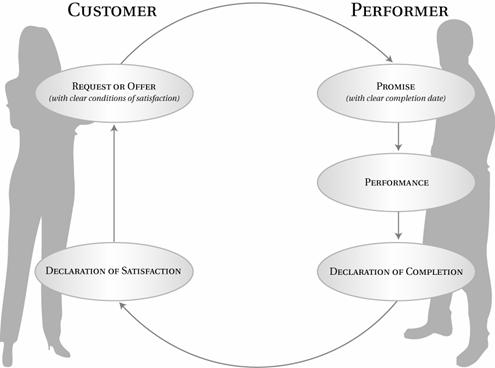 Promises, Commitments, and Peak Performance…
Promises, Commitments, and Peak Performance…
From a performance perspective, failures and breakdowns (whether they occur in operational processes, business negotiations, or our everyday relationships with colleagues, friends, or family) often fail for one simple reason:
“The failure to make and manage commitments effectively!”
That’s not just my opinion, but rather the opinion of many recognized “gurus” and thought leaders in the change management discipline. So much so, that “commitment based management” is now a well known and accepted approach to managing change, and has developed what I would call a true “following of believers” within consultancies and companies who have used it effectively.
While, to many of you, this may appear to be somewhat “common sense”, it is based on a long history of research and hard work done by Fernando Flores and his colleagues over the past several decades. I’ve had the opportunity to work beside some of his students, and while I didn’t agree with everything they’ve preached, they did convince me (through a myriad of real life examples), of the enormous depth and breadth of impact deriving from this simple yet powerful concept. If you are interested in learning more about the model, and the research behind it, a little time on Google will give you more than you need. I have also included some links at the bottom this article, and would encourage you to take a look.
A simple yet powerful model for sustainable change…
There are a lot of complexities and nuances to the model, and I encourage you to take the time to understand its background, development, and evolution. As the attached articles indicate, much of it originated in Flores’ research into the intersection of linguistics, psychology, and biology: three areas only now being collectively explored outside this discipline as a highly dependent web of interrelationships and connections.
But at its core, the model is, in fact, quite simple. It involves several aspects:
- The transaction– Any transaction which involves commitments being made and delivered upon. This could be an interaction with a colleague, a transaction with an “actual” customer, a negotiation with a vendor, or any variant or sub-variant of the above.
- The parties– Specifically, a customer and a performer, which I would encourage you to think about in a dynamic way. (i.e., roles can change in other transactions, or even within stages of this one).
- The Customer’s condition of satisfaction – both tangible and intangible, with both clearly understood within the context of the transaction.
- The 4 stages of the transaction itself- Preparation, Negotiation, Performance, and Acknowledgment of completion of the transaction.
- The range of movements and interactions within the transaction -Manifestations of what the original research called “speech acts” – (Requests, Promises, Assessments, Assertions, and Declarations) – each manifesting themselves in the actual phases of the transaction through the words and behaviors of both the performer and customer.
Some would say I’m over-complicating a simple dynamic. But those at the core of the discipline would say I’m actually over-simplifying it. So I suspect this may actually be a fairly balanced representation, although I still encourage further reading and study to draw your own conclusions.
Nevertheless, with the right understanding, the lens that this model offers provides a very powerful view into how these transactions work, and where in fact many of them break down. While the notion of “customer and provider” roles is not new, what is unique is the range of dynamics at play and what is required to make it work.
In a nutshell, the model plays out through a series of interactions that form the basis of the commitment. It starts with an attempt to understand (though good listening and well-grounded assessments) the “customer” in the way that allows the performer to make a clear, compelling, and coherent “offer” to which the customer can either reject or accept in the form of a “request”. While this often results in an iterative conversation, one of the things that can emerge is what we’ll call “the promise”. If the promise does in fact manifest as a commitment, the process (specifically the coordination of action through conversations and behaviors) plays out until delivery is perceived, declared, and assessed.
Again, simple yet powerful in terms of applying a clear and measurable framework and specific actions to an otherwise common everyday occurrence. And it works not because we recognize the importance of commitments and the presence of this simple process, but because of a common awareness of what each phase entails in terms of key actions, required skills, necessary behaviors, and competencies that have either been absent, overlooked, or become unlearned.
The implications are significant and far reaching…
As I’ve worked within and around this model, with companies who have embraced it holistically (like many embrace Lean or Six Sigma initiatives), it has become clear to me that the tools offered by the approach have broad, sweeping implications. Here are just a few examples that point not only to the value of adopting this framework, but also the unique dynamics and behaviors at play that require significant leadership commitment and investment to instill within the organization.
- Customer Service/CRM – This should be the most obvious and straightforward application for this methodology, since the roles of Customer and Performer are obvious from start to finish…right? Wrong. For one, if you study the model, you will understand quickly that the roles are dynamic and change frequently “within the process”. But even without that complexity, there is the myriad of actions that occur within the transaction that many CS Organizations (performers) are simply blind to. For example, are your CSR’s aware when every time they make a “promise”? (Do they really? Be careful, as it could happen 10 times inside of one interaction!). Do they know what they are actually doing (and where in the interaction they are) when they say the words “I’m sorry”, and simply move on (see post on the “empty promise”) ? So much of this process could be improved with some simple and basic understanding of how this transaction works.
 Leadership alignment – A major issue for many companies, and perhaps the least understood. Why? Because at its core, alignment issues are about trust. As a close colleague once told me, trust is made of 3 things: Sincerity (of the person your are making the trust assessment about), Competence (in their ability to perform in all domains of the transaction), and Reliability (your assessment of their ability to consistently deliver on promises). There are too many dynamics to explore in one short paragraph, but I think you’ll agree that working within a framework like the above would bring into focus much of what our leaders and managers are blind to (often not willfully), thus improving the overall trust and alignment of the group.
Leadership alignment – A major issue for many companies, and perhaps the least understood. Why? Because at its core, alignment issues are about trust. As a close colleague once told me, trust is made of 3 things: Sincerity (of the person your are making the trust assessment about), Competence (in their ability to perform in all domains of the transaction), and Reliability (your assessment of their ability to consistently deliver on promises). There are too many dynamics to explore in one short paragraph, but I think you’ll agree that working within a framework like the above would bring into focus much of what our leaders and managers are blind to (often not willfully), thus improving the overall trust and alignment of the group.- Managing Performance – This one may actually be the most direct application of these principles since the customer and performer are usually defined for the scope of a specific transaction. Save for team goals, they usually take place between leaders/managers and their subordinates. And in those cases, it is a fairly straightforward negotiation. But the problem in most negotiations like this is that neither the customer nor performer play their roles very well, largely because they do not understand what their responsibilities are within the transaction. This ranges from”understanding the customer enough to make a relevant and robust offer”, to the ensuing “request”, “establishment of conditions of satisfaction”, a “promise to deliver”, the “declaration of completion”, and everything in between. I spoke yesterday to the variability in companies’ target setting effectiveness. This model would help address many of those concerns by improving clarity of roles and actions required of the parties.
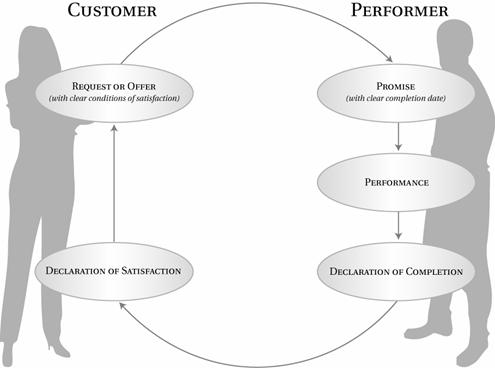 Labor Negotiations – This is such a volatile situation for many companies that any resource used to address it has become such a specialized skill that it is almost a “self contained” problem within most organizations (critical, but viewed and resolved separately through other courses of action.) But I’ve also seen companies who have applied these skills (usually as a result of all leadership and even labor representation in the business having been taught how to operate within the framework), and their successes has been impressive. It doesn’t solve every breakdown easily, but just as with leadership alignment, these breakdowns are rooted in trust, and solving the trust problem is the fastest path to addressing the range of other barriers to a productive settlement and ongoing relationship.
Labor Negotiations – This is such a volatile situation for many companies that any resource used to address it has become such a specialized skill that it is almost a “self contained” problem within most organizations (critical, but viewed and resolved separately through other courses of action.) But I’ve also seen companies who have applied these skills (usually as a result of all leadership and even labor representation in the business having been taught how to operate within the framework), and their successes has been impressive. It doesn’t solve every breakdown easily, but just as with leadership alignment, these breakdowns are rooted in trust, and solving the trust problem is the fastest path to addressing the range of other barriers to a productive settlement and ongoing relationship.- Operational Process Improvement– I am not going to argue here about the best way to address process breakdowns or inefficiencies. I happen to be a strong advocate of tools like Lean and other supporting tools like Benchmarking, Dashboards, and other aspects of the Performance Management infrastructure. But one thing we can all agree on in “operational improvement space” is that process change requires people change, and without addressing the leadership and cultural dynamics, change will undoubtedly fail. One very powerful aspect of this model, is the degree to which it blends operational work-flow with human dynamics of managing commitments. In fact, one of the most creative and effective “process maps” I’ve seen to date did NOT include boxes, lines, and swim-lanes like we see on conventional flowcharts, but rather a series of connected “loops” like the one above, each of which spawned other “commitment loops, thus allowing the more critical human breakdowns in alignment, trust and commitment management (often the real culprits and victims of process breakdown) to be more fully understood and addressed. Pretty powerful stuff!
- Technology Development– Much of Flores’ early work resulted in a book called “Computers and Cognition”, and while I found that book, and his later works to be very in-depth and sometimes difficult reads, they have become like “books of the bible” for the many gurus that were born under his leadership. And so it is not hard to make some pretty clear connections between technology and software, and the implications of the above on their thinking and ongoing development. If you think about it, all the basic tenets of commitments are found in most applications we work with on a daily basis, from email and calendaring, to work planning and management systems…not to mention the plethora of implications emerging from the advent and rapid evolution of Social Media.
These are five examples for which I have either applied these principles directly (performance management systems, process change, and leadership alignment ), or seen them successfully deployed by others (formal negotiations (from unions to suppliers) and software/ technology deployment). But this list is by no means exhaustive and the approach deployed clearly has the potential to impact many other facets of business, government, and even our personal lives.
Again, my intent is certainly not to oversimplify the importance, or the manner, in which this approach can be deployed. But at the same time (at the risk of offending the true disciples of this methodology) it’s not “brain surgery”, and it is possible to deploy with the right skills, talent, and understanding. But at the same time, I’ve seen some companies (including some I have consulted and worked with) fail because leadership lacked the openness and receptivity required to learn, commit to, and develop the competencies required to effect the level of change possible.
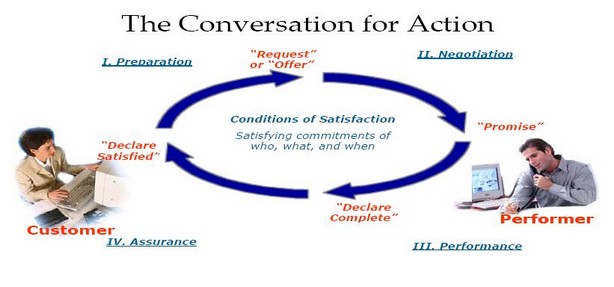
Read the articles below and come to your own conclusions. If, after that, any of this strikes a real chord with you, and you want to learn more (specifically how this impacts areas like the 7 I mention above, and the degree to which they can be integrated into your existing performance management and operational improvement initiatives), send me a comment or drop me an email at bob.champagne@onvectorconsulting.com and I’ll be happy to connect you with some wonderful people who I call “the real brain surgeons” of this type of change.
HBR Article on Commitment Based Management
Fast Company article on Flores’ and his approach
Blog Post by Clarke Ching on “Conversations for Action”
Blog Post by David Arella on “Managing Commitments”
Coordination of Action: Implications on Customer Relationship Management (by Vision Consulting)
Change Management Perspective (by Vision Consulting)
There are, of course, many adaptations and improvements to Flores’ thinking that have emerged over the years, and this is just a small sample. If there are other articles you’d like me to add on this specific approach (and there are many good ones out there), just post them in the comments and I’ll be happy to reference them via an updated post.
Author: Bob Champagne is Managing Partner of onVector Consulting Group, a privately held international management consulting organization specializing in the design and deployment of Performance Management tools, systems, and solutions. Bob has over 25 years of Performance Management experience and has consulted with hundreds of companies across numerous industries and geographies. Bob can be contacted at bob.champagne@onvectorconsulting.com


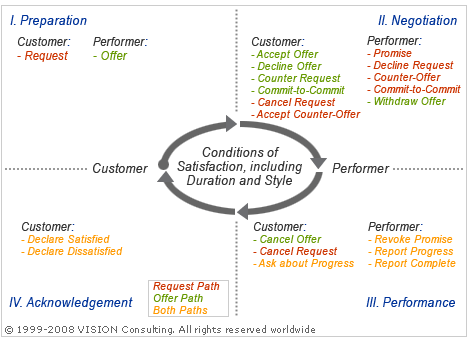


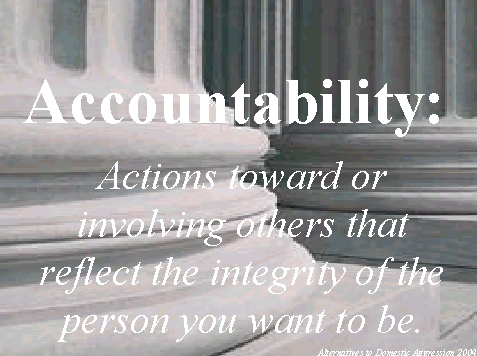

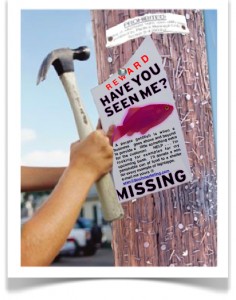
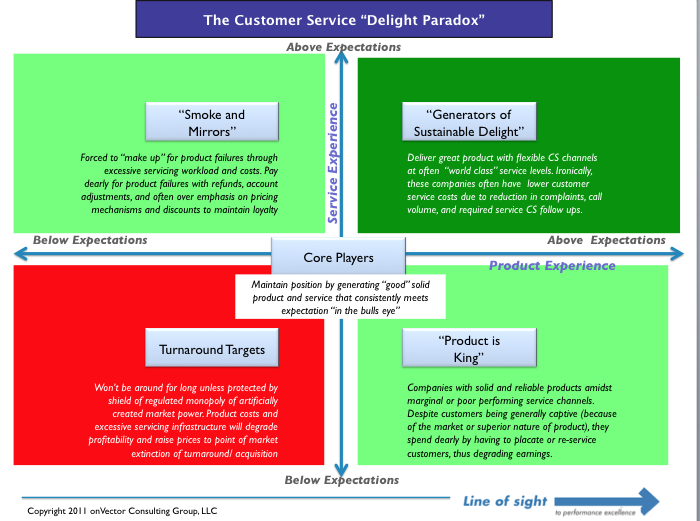 And while, it’s not the “holy grail” on the chart above, operating in the cross hairs (“core players”) can actually be a pretty safe place to play. It won’t earn you much in the way of lagniappe or high levels of customer “delight”, but there is something to be said for consistently meeting both expectations ALL THE TIME. Customers value that more than we often think. Look no further than Southwest Airlines and McDonald’s for examples in this domain.
And while, it’s not the “holy grail” on the chart above, operating in the cross hairs (“core players”) can actually be a pretty safe place to play. It won’t earn you much in the way of lagniappe or high levels of customer “delight”, but there is something to be said for consistently meeting both expectations ALL THE TIME. Customers value that more than we often think. Look no further than Southwest Airlines and McDonald’s for examples in this domain.
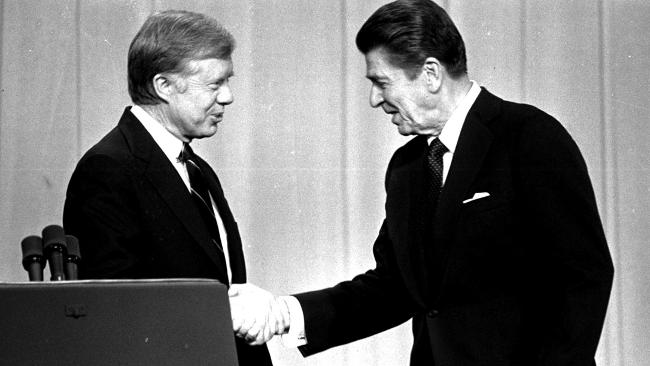
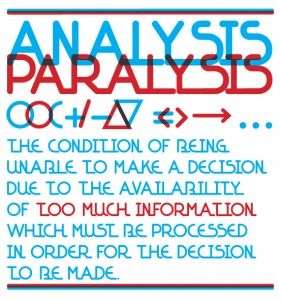

 Analysis– When many companies hear the word “analysis”, they go straight to thinking about how they can better “work the data” they have. They begin by taking their scorecard down a few layers. The word “drill down” becomes synonymous with “analysis”. However, while they each are critical activities, they play very separate roles in the process. The act of “drilling down” (slicing data between plants, operating regions, time periods, etc.) will give you some good indication where problems exist. But it is not “real analysis” that will get you very far down the path of defining root causes and ultimately bettersolutions. And often, it’s why we get stuck at this level. Continuous spinning of the “cube” gets you no closer to the solution unless you get there by accident. And that is certainly the long way home. Good analysis starts with good questions. It takes you into the generation of a hypothesis which you may test, change and retest several times. It more often than not takes you into collecting data that may not (and perhaps should not) reside in your scorecard and dashboard. It requires sampling events and testing your hypotheses. And it often involves modeling of causal factors and drivers. But it all starts with good questions. When we refer to “spending more time in the problem”, this is what we’re talking about. Not merely spinning the scorecard around its multiple dimensions to see what solutions “emerge”.
Analysis– When many companies hear the word “analysis”, they go straight to thinking about how they can better “work the data” they have. They begin by taking their scorecard down a few layers. The word “drill down” becomes synonymous with “analysis”. However, while they each are critical activities, they play very separate roles in the process. The act of “drilling down” (slicing data between plants, operating regions, time periods, etc.) will give you some good indication where problems exist. But it is not “real analysis” that will get you very far down the path of defining root causes and ultimately bettersolutions. And often, it’s why we get stuck at this level. Continuous spinning of the “cube” gets you no closer to the solution unless you get there by accident. And that is certainly the long way home. Good analysis starts with good questions. It takes you into the generation of a hypothesis which you may test, change and retest several times. It more often than not takes you into collecting data that may not (and perhaps should not) reside in your scorecard and dashboard. It requires sampling events and testing your hypotheses. And it often involves modeling of causal factors and drivers. But it all starts with good questions. When we refer to “spending more time in the problem”, this is what we’re talking about. Not merely spinning the scorecard around its multiple dimensions to see what solutions “emerge”.

